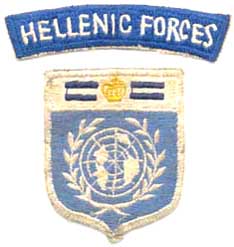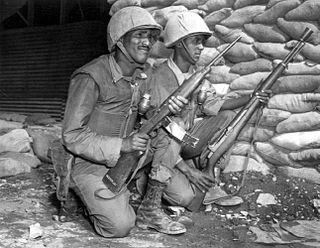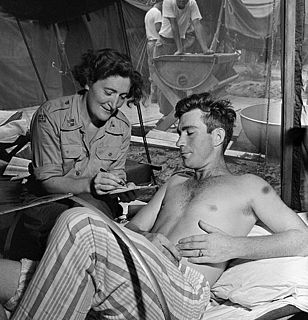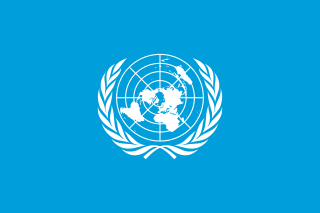 W
WThe 1st Commonwealth Division was the name given, after July 1951, to Commonwealth land forces in the Korean War. The division was a multinational unit that was part of British Commonwealth Forces Korea, and whilst British and Canadian Army units formed the bulk of the division, Australian infantry, New Zealand artillery and an Indian medical unit were also a part of the division. As with the US "KATUSA" programme, numerous South Korean troops were seconded to the Commonwealth division to make up numbers under a programme known as "KATCOM".
 W
W2 Squadron is a squadron in the South African Air Force which was formed in 1940. The squadron has a long history, having been involved in every single combat action in which the SAAF has taken part. During the Second World War it made a name for itself in the battles for East Africa, before distinguishing itself in North Africa as part of the Desert Air Force, and later in Italy.
 W
WThe 29th Infantry Brigade was an infantry brigade unit of the British Army. It was originally raised in 1914 and saw service during the First and Second World Wars and the Korean War.
 W
WThe Volunteer Corps for Korea, later known as Belgian United Nations Command (BUNC), was a Belgian–Luxembourg military force sent to assist South Korea during the Korean War. A battalion-sized unit, it arrived in Korea in 1951 and remained after the cease-fire until 1955. Over the course of its existence, 3,171 Belgians and 78 Luxembourgers served in the unit.
 W
WBritish Commonwealth Forces Korea (BCFK) was the formal name of the Commonwealth army, naval and air units serving with the United Nations (UN) in the Korean War. BCFK included Australian, British, Canadian, Indian, and New Zealand units. Some Commonwealth units and personnel served with United States and/or other UN formations, which were not part of BCFK.
The French Battalion of the United Nations Organisation was a battalion of volunteers made up of active and reserve French military personnel sent to the Korean Peninsula as part of the UN force fighting in the Korean War.
 W
WThe Greek Expeditionary Force (GEF) in Korea was formed in response to the United Nations appeal for assistance in the Korean War. It comprised a reinforced Hellenic Army infantry battalion and a Royal Hellenic Air Force (RHAF) flight of seven transport planes. Greece was the fifth largest troop contributor to U.N. Forces in Korea.
 W
WThe Kagnew Battalions were a number of military units from the Imperial Ethiopian Army which fought as part of United Nations Command in the Korean War (1950–53). The battalions rotated yearly, with the First Kagnew Battalion arriving at the front in 1951. The Third Kagnew Battalion which arrived in 1953, stayed through the signing of the armistice into 1954. Over the next two years more Ethiopians guarded the stalemate in Korea as part of the Fourth Kagnew Battalion and the Fifth Kagnew Company. Even though some publications indicate Ethiopians remained in Korea until 1965, in fact they remained a part of the United Nations Command until 1975. Members of Kagnew Battalion were, with few exceptions, drawn from the Ethiopian Imperial Bodyguard Division.
 W
WThe involvement of New Zealand in the Korean War began in 1950 as a response to the United Nations Security Council's call for combat assistance in the erupting Korean War. New Zealand was one of the first nations to respond with support.
 W
WNorwegian Mobile Army Surgical Hospital (NORMASH) was the Norwegian field hospital in Korea from 1951 to 1954, participating in the United Nations Command operations in Korea.
The Parachute Regiment is an airborne forces and special forces regiment of the Indian Army.
 W
WThe Philippine Expeditionary Force to Korea (PEFTOK) was the Philippine Army contingent of the United Nations forces that fought in the Korean War (1950–1953). The unit arrived in Korea in August 1950. It was composed of 1,468 troops, and was the fifth largest force under the United Nations Command. The PEFTOK took part in the Battle of Miudong Battle of Yultong and the Battle of Eeerie Hill. The unit operated alongside the United States 1st Cavalry Division, 3rd Infantry Division, 25th Infantry Division, and 45th Infantry Division.
 W
WThe Regiment van Heutsz is a line infantry regiment of the Royal Netherlands Army. The regiment was named after J.B. van Heutsz, a former Governor-General of the Dutch East Indies, and was formed on July 1, 1950. It is notable for its service as part of the United Nations force sent to fight during the Korean War. It is still operational and has served tours as part of the ISAF Afghanistan Mission.
The Royal Australian Regiment (RAR) is the parent administrative regiment for regular infantry battalions of the Australian Army and is the senior infantry regiment of the Royal Australian Infantry Corps. It was originally formed in 1948 as a three battalion regiment; however, since then its size has fluctuated as battalions have been raised, amalgamated or disbanded in accordance with the Australian government's strategic requirements. Currently, the regiment consists of seven battalions and has fulfilled various roles including those of light, parachute, motorised and mechanised infantry. Throughout its existence, units of the Royal Australian Regiment have deployed on operations in Japan, Korea, Malaya, Borneo, Vietnam, Somalia, Rwanda, Cambodia, East Timor, the Solomon Islands, Iraq and Afghanistan.
 W
WThe Kingdom of Thailand was one of the 21 countries who responded to the United Nations request to send troops to aid South Korea during the Korean War 1950-1953. As well as being one of the first countries to openly express its support for South Korea's cause, whilst also being one of the UN's larger contributors to the war. Thai support was important to battles determining the outcome of the war, including Pork Chop Hill and the Third Battle of Seoul.
 W
WThe Turkish Brigade was a Turkish Army Infantry Brigade that served with the United Nations Command during the Korean War between 1950 and 1953. Attached to the U.S. 25th Infantry Division, the Turkish Brigade fought in several actions and was awarded Unit Citations from Korea and the United States after fighting in the Battle of Kunuri. The Turkish Brigade developed a reputation for its fighting ability, stubborn defense, commitment to mission, and bravery.
 W
WThe United Nations Command (UNC) is the unified command for the multinational military forces, established in 1950, supporting South Korea during and after the Korean War.